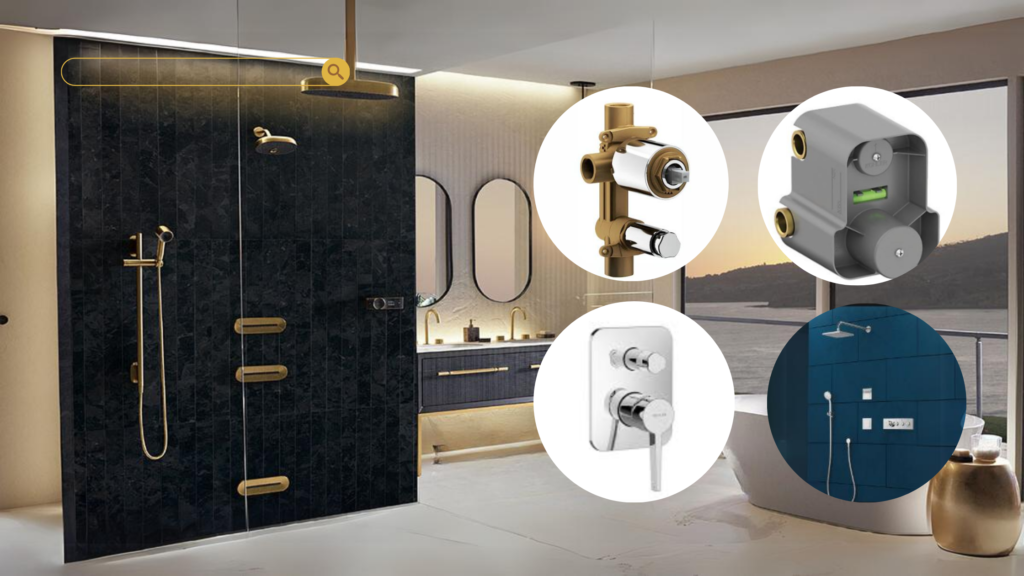In the quest for a perfect shower experience, the role of the shower valve cannot be overstated. Acting as the heart of your shower’s plumbing system, these valves not only manage the water flow but also protect you from temperature extremes, ensuring every shower is safe and enjoyable. Understanding the various types of shower valves can enhance your experience and help you make informed decisions, whether you’re installing a new bathroom or upgrading an existing one.
Understanding Shower Valves
A shower valve is critical for controlling the mix of hot and cold water in your shower. The right Shower Valve Type can prevent a pleasant shower from turning scalding or freezing unexpectedly. Let’s dive into the different types of shower valves available and how they contribute to a seamless bathing experience.
1. Pressure Balancing Valves
Commonly used in homes, pressure balancing valves maintain a consistent water temperature despite fluctuations in the hot or cold water supply lines. These valves work by adjusting the flow of water to compensate for changes in pressure. They are equipped with a balancing spool that moves to equalize the pressure of the incoming hot and cold water. The main advantage is safety from sudden temperature changes, commonly referred to as “thermal shock.”
2. Thermostatic Valves
For those looking for more precise temperature control, thermostatic valves are the superior choice. These valves allow you to set a preferred temperature, which is consistently maintained regardless of changes in water pressure. Unlike pressure balancing valves, thermostatic valves control the temperature and the volume of water, providing a stable and comfortable showering environment. They are particularly useful in households with children or elderly members, where safety against scalding is paramount.
Types of Thermostatic Valves:
- Twin Thermostatic Valve: Features two controls, one for temperature and another for turning the water flow on or off.
- Dual Thermostatic Valve with Diverter: Ideal for showers with multiple outlets, allowing control over which shower head is active while maintaining temperature control.
- Triple Thermostatic Valve: Allows simultaneous use of multiple shower functions with dedicated controls for temperature and individual water flows.
- Triple Thermostatic Valve with Diverter: The most versatile option, suitable for complex shower systems with multiple water outlets, offering individual temperature and flow controls.
3. Shower Mixing Valves
Often found in older homes, mixing valves are basic in functionality. They manually mix hot and cold water based on the position of the handle or knob. While they are simple and straightforward, they lack the features to prevent thermal shock, making them less suitable for households with varying water usage during a shower.
4. Diverter Valves
Diverter valves are essential when the bathroom setup includes a combination of a bathtub and shower. They direct the flow of water either to the bathtub spout or the showerhead. Diverter valves can be integrated into the tub spout or installed as a separate control within the shower valve system.
Types of Shower Diverter Valves:
- Tee-Diverter: Situated in the tub spout, it diverts water to the showerhead when lifted.
- Two-Valve Diverter: Located between the taps of a two-tap faucet, it directs water to the showerhead or tub.
- Three-Valve Diverter: Found in three-handle shower setups, where each valve controls the hot and cold water, with the third diverting to either the tub or the shower.
Also Read: Elevate Your Shower Experience: How to Choose the Perfect Bathroom Shower Set
Also Read: 7 Benefits of Using Brass Water Faucets in Bathrooms and Kitchens
Closing Thoughts
Choosing the right shower valve is pivotal for achieving a controlled and pleasant showering experience. Whether it’s maintaining a consistent temperature, adjusting water flow, or simply directing water to a showerhead or tub, each type of shower valve plays a crucial role in enhancing your bathroom functionality. With the knowledge of different types of shower valves, you can now make a more informed decision tailored to your needs, ensuring every shower is exactly as you desire.
FAQs
What is the valve on a shower?
A shower valve controls the flow, temperature, and direction of water to the showerhead and potentially other outputs like a tub spout.
Can a shower valve be repaired?
Yes, most shower valves can be repaired by replacing the valve cartridge, which resolves most leakage and performance issues.
What is the valve that turns the shower on?
This is typically the diverter valve if your shower is combined with a bathtub. In standalone showers, the main control valve functions to start the water flow.
Can I replace a shower valve myself?
Replacing a shower valve can be complex and requires plumbing knowledge. It is recommended to hire a professional unless you have substantial experience with home plumbing projects.


Very informative article, The breakdown of different types of shower valves is clear and detailed, making it easier to understand which option best suits various needs. I appreciate the focus on both functionality and installation considerations. This guide is a must-read for anyone planning a bathroom upgrade or renovation.
What a great breakdown of different types of shower valves, Understanding the options helps in choosing the right one for both functionality and comfort. It would be helpful to see some tips on maintenance and troubleshooting common valve issue.